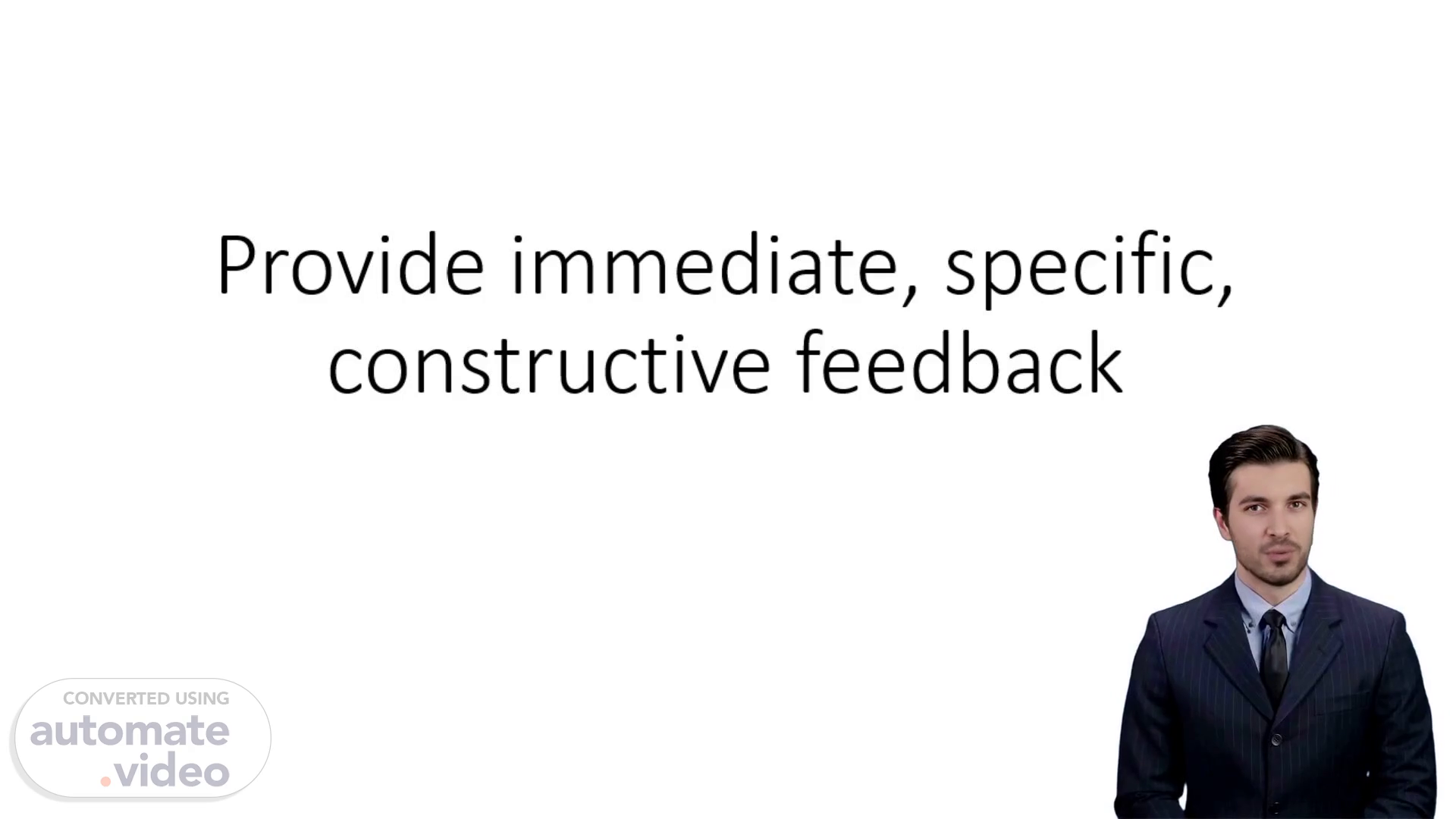
Page 1 (0s)
[Virtual Presenter] Good morning everyone. Today we are going to discuss the significance of offering prompt precise and constructive feedback. We will concentrate on some techniques that pay attention particularly to language the sandwich technique setting expectations prompt feedback self-reflection and more. Let us begin..
Page 2 (22s)
[Audio] Give students specific feedback that helps them focus on the task and grow as individuals. For example instead of just saying "good job " try giving them something specific to focus on such as "I like how you used different colours to make the sky look realistic". Now let's look at how we can separate the behaviour from the person..
Page 3 (42s)
[Audio] When giving feedback remember the quote: "Focus on the behaviour not the student". Instead of accusing try acknowledging the behaviour. For example say "I noticed you were distracted during the lesson. Let's try to focus on our work". To make sure the feedback is positive consider using the 'sandwich' approach. Begin with positive feedback then address areas for improvement and conclude with encouragement or positive reinforcement..
Page 4 (1m 10s)
[Audio] It is essential for teachers to give our students timely constructive feedback to help them learn and make progress. The Sandwich Approach is a powerful and effective technique to accomplish this. It involves beginning with a positive comment followed by an area of improvement and then finishing with a reinforcing positive comment. For instance when giving feedback to a student working in a group you can start by referring to something they did well like collaborating with their partner. Then you can indicate areas where they could improve such as speaking louder so everyone can hear their ideas. Finally it is important to end on a positive note such as encouraging them to continue their good teamwork. This approach keeps our feedback positive and supportive while still helping our students learn and develop..
Page 5 (2m 0s)
[Audio] It is important to provide clear expectations to ensure our students learn effectively. Instead of using generic language like 'behave' it is best to use specific and direct language. For instance rather than simply saying 'behave' we could state 'I expect you to raise your hand before speaking'. By giving students clear expectations it provides them with the guidance and structure needed for learning..
Page 6 (2m 27s)
[Audio] Providing feedback effectively requires timeliness. Address behaviors or achievements as soon as possible to ensure the reaction and the feedback are connected. Asking questions to promote self-reflection can create self-awareness and encourage ownership of the learning process..
Page 7 (2m 45s)
[Audio] Self-reflection is essential for developing independent learners. Invite students to think critically about their work and evaluate their own progress. Having the ability to self-analyze and take ownership of their learning is an important skill for students to cultivate. When providing feedback use language that is constructive instead of overly critical in order to foster a positive learning environment. This will also help students to identify opportunities for growth..
Page 8 (3m 14s)
[Audio] Positive language is a powerful tool when giving feedback. It allows us to focus on what can be done to achieve better results rather than highlighting shortcomings. When providing feedback it is beneficial to provide concrete solutions and plans to address any deficiencies..
Page 9 (3m 32s)
[Audio] When giving feedback to students about areas they can improve it's important to make our suggestions practical and actionable. We want to give them tools to get to where they want to go. For example if students are struggling to solve a problem we can suggest they break it down into smaller steps so it's easier to approach and figure out. With this approach we can be sure that our feedback is helping our students succeed..
Page 10 (3m 55s)
[Audio] In order for feedback to be effective in the learning process it is necessary to demonstrate to students that it is alright to react positively and constructively to both positive and constructive criticism. To guarantee the process is successful we need to monitor the student's progress following the feedback and highlight the importance of feedback..
Page 11 (4m 18s)
[Audio] Providing feedback alone is not sufficient for a student's development. It is essential to then follow up and observe how the feedback is being implemented. Doing this will demonstrate that you are invested in the student's growth and will reinforce the concept that feedback is a useful learning tool..
Page 12 (4m 34s)
[Audio] I hope that by the end of this presentation you have a better understanding of how to provide immediate specific and constructive feedback. These strategies can help students gain insight into their successes and areas of improvement allowing them to continue to grow and develop in their academic and social pursuits. Thank you for your attention and participation..